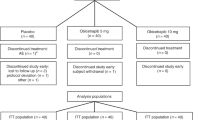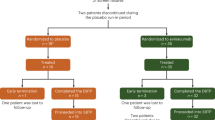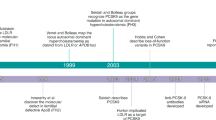Abstract
Subnormal levels of HDL cholesterol constitute a major cardiovascular risk factor. Inhibitors of cholesteryl ester transfer protein (CETP) are presently the most potent HDL-raising agents. Torcetrapib was the first CETP inhibitor to enter a large-scale, prospective, placebo-controlled interventional trial, which was prematurely terminated in December 2006 because of excess cardiovascular and noncardiovascular mortality in the active treatment group. Therapy with torcetrapib was associated with considerable increases in aldosterone level and blood pressure and changes in serum electrolytes indicative of mineralocorticoid excess. These findings indicate that torcetrapib has off-target toxic effects unrelated to HDL raising that involve the activation of mineralocorticoid receptors by aldosterone and result in the induction of hypertension. In contrast with torcetrapib, other CETP inhibitors such as JTT-705 and MK-825 do not increase blood pressure in humans, an observation which discounts a class effect. The available data do not, however, exclude potential adverse effects of CETP inhibition such as the generation of HDL particles that have deficient biological activities and a deleterious impact on reverse cholesterol transport and steroid metabolism. Normalization of both defective HDL function and diminished HDL levels should, therefore, be the focus of pharmacological HDL raising in future studies.
Key Points
-
Inhibitors of cholesteryl ester transfer protein (CETP) are presently the most potent agents for raising HDL cholesterol
-
Torcetrapib, the first CETP inhibitor to enter a large-scale, prospective, placebo-controlled interventional trial (ILLUMINATE), was associated with excess cardiovascular and noncardiovascular mortality in the active-treatment group
-
Torcetrapib treatment resulted in significantly increased aldosterone levels, altered serum electrolytes indicative of mineralocorticoid excess, and elevated blood pressure, indicating an off-target mechanism of torcetrapib-related toxic effects involving activation of mineralocorticoid receptors by aldosterone with subsequent induction of hypertension
-
Other CETP inhibitors such as JTT-705 and MK-825 do not increase blood pressure in humans, an observation that tends to discount a class effect
-
Potential adverse effects of CETP inhibition cannot, however, be excluded; CETP inhibition could result in the generation of HDL particles that have deficient antiatherogenic activities and a deleterious impact on reverse cholesterol transport and steroid metabolism
This is a preview of subscription content, access via your institution
Access options
Subscribe to this journal
Receive 12 print issues and online access
$209.00 per year
only $17.42 per issue
Buy this article
- Purchase on Springer Link
- Instant access to full article PDF
Prices may be subject to local taxes which are calculated during checkout

Similar content being viewed by others
References
Chapman MJ (2005) Beyond LDL-cholesterol reduction: the way ahead in managing dyslipidaemia. Eur Heart J Suppl 7: F56–F62
Yusuf S et al.; INTERHEART Study Investigators (2004) Effect of potentially modifiable risk factors associated with myocardial infarction in 52 countries (the INTERHEART study): case–control study. Lancet 364: 937–952
Barter P et al.; Treating to New Targets Investigators (2007) HDL cholesterol, very low levels of LDL cholesterol, and cardiovascular events. N Engl J Med 357: 1301–1310
Dullens SP et al. (2007) Increasing apoA-I production as a target for CHD risk reduction. Nutr Metab Cardiovasc Dis 17: 616–628
Kontush A and Chapman MJ (2006) Functionally defective HDL: a new therapeutic target at the crossroads of dyslipidemia, inflammation and atherosclerosis. Pharmacol Rev 3: 342–374
Kontush A and Chapman MJ (2006) Antiatherogenic small, dense HDL—guardian angel of the arterial wall? Nat Clin Pract Cardiovasc Med 3: 144–153
Ansell BJ et al. (2007) The paradox of dysfunctional high-density lipoprotein. Curr Opin Lipidol 18: 427–434
Navab M et al. (2006) Potential clinical utility of high-density lipoprotein-mimetic peptides. Curr Opin Lipidol 17: 440–444
Shah PK (2007) High-density lipoprotein mimetics: focus on synthetic high-density lipoprotein. Am J Cardiol 100: S62–S67
Barter PJ and Kastelein JJ (2006) Targeting cholesteryl ester transfer protein for the prevention and management of cardiovascular disease. J Am Coll Cardiol 47: 492–499
Lewis GF and Rader DJ (2005) New insights into the regulation of HDL metabolism and reverse cholesterol transport. Circ Res 96: 1221–1232
Barter PJ et al.; ILLUMINATE Investigators (2007) Effects of torcetrapib in patients at high risk for coronary events. N Engl J Med 357: 2109–2122
Chapman MJ (2006) Therapeutic elevation of HDL-cholesterol to prevent atherosclerosis and coronary heart disease. Pharmacol Ther 111: 893–908
Rader DJ (2007) Illuminating HDL—is it still a viable therapeutic target? N Engl J Med 357: 2180–2183
Guérin M et al. (1994) Preferential cholesteryl ester acceptors among the LDL subspecies of subjects with familial hypercholesterolemia. Arterioscler Thromb 14: 679–685
Millar JS et al. (2006) Effects of the cholesteryl ester transfer protein inhibitor torcetrapib on apolipoprotein B100 metabolism in humans. Arterioscler Thromb Vasc Biol 26: 1350–1356
Guérin M et al. (2008) Inhibition of CETP by torcetrapib attenuates the atherogenicity of postprandial TG-rich lipoproteins in type IIB hyperlipidemia. Arterioscler Thromb Vasc Biol 28: 148–154
Brousseau ME et al. (2005) Effects of cholesteryl ester transfer protein inhibition on high-density lipoprotein subspecies, apolipoprotein A-I metabolism, and fecal sterol excretion. Arterioscler Thromb Vasc Biol 25: 1057–1064
Yvan-Charvet L et al. (2007) Inhibition of cholesteryl ester transfer protein by torcetrapib modestly increases macrophage cholesterol efflux to HDL. Arterioscler Thromb Vasc Biol 27: 1132–1138
Thuahnai ST et al. (2004) Scavenger receptor class B type I-mediated cholesteryl ester-selective uptake and efflux of unesterified cholesterol: influence of high density lipoprotein size and structure. J Biol Chem 279: 12448–12455
Rhainds D et al. (2003) The role of human and mouse hepatic scavenger receptor class B type I (SR-BI) in the selective uptake of low-density lipoprotein-cholesteryl esters. Biochemistry 42: 7527–7538
Greene DJ et al. (2001) Elevated triglyceride content diminishes the capacity of high density lipoprotein to deliver cholesteryl esters via the scavenger receptor class B type I (SR-BI). J Biol Chem 276: 4804–4811
Kastelein JJ et al.; RADIANCE 1 Investigators (2007) Effect of torcetrapib on carotid atherosclerosis in familial hypercholesterolemia. N Engl J Med 356: 1620–1630
Nissen SE et al.; ILLUSTRATE Investigators (2007) Effect of torcetrapib on the progression of coronary atherosclerosis. N Engl J Med 356: 1304–1316
Nicholls SJ et al. (2007) Changes in levels of high density lipoprotein cholesterol predict the impact of torcetrapib on progression of coronary atherosclerosis: insights from ILLUSTRATE [abstract 684]. Circulation 116 (Suppl 16): II–127
Zilversmit DB (1979) Atherogenesis: a postprandial phenomenon. Circulation 60: 473–485
Cohn JS et al. (1999) Detection, quantification, and characterization of potentially atherogenic triglyceride-rich remnant lipoproteins. Arterioscler Thromb Vasc Biol 19: 2474–2486
Guérin M et al. (2002) Cholesteryl ester flux from HDL to VLDL-1 is preferentially enhanced in type IIB hyperlipidemia in the postprandial state. J Lipid Res 43: 1652–1660
Vaisar T et al. (2007) Shotgun proteomics implicates protease inhibition and complement activation in the antiinflammatory properties of HDL. J Clin Invest 117: 746–756
Genest J (2008) The yin and yang of high-density lipoprotein cholesterol. J Am Coll Cardiol 51: 643–644
Krishna R et al. (2007) Effect of the cholesteryl ester transfer protein inhibitor, anacetrapib, on lipoproteins in patients with dyslipidaemia and on 24-h ambulatory blood pressure in healthy individuals: two double-blind, randomised placebo-controlled phase I studies. Lancet 370: 1907–1914
van der Steeg WA et al. (2007) Role of the apolipoprotein B-apolipoprotein A-I ratio in cardiovascular risk assessment: a case-control analysis in EPIC-Norfolk. Ann Intern Med 146: 640–648
Walldius G and Jungner I (2007) Apolipoprotein A-I versus HDL cholesterol in the prediction of risk for myocardial infarction and stroke. Curr Opin Cardiol 22: 359–367
Ingelsson E et al. (2007) Clinical utility of different lipid measures for prediction of coronary heart disease in men and women. JAMA 298: 776–785
Watson KE et al. (2007) HDL function as a target of lipid-modifying therapy. Rev Cardiovasc Med 8: 1–8
Kontush A and Chapman MJ (2008) Why is HDL functionally deficient in Type 2 diabetes? Curr Diabetes Rep 8: 51–59
Lai E et al. (2007) Suppression of niacin-induced vasodilation with an antagonist to prostaglandin D2 receptor subtype 1. Clin Pharmacol Ther 81: 849–857
Kamanna VS and Kashyap ML (2007) Nicotinic acid (niacin) receptor agonists: will they be useful therapeutic agents? Am J Cardiol 100: S53–S61
Sviridov D et al. (2007) Indices of reverse cholesterol transport in subjects with metabolic syndrome after treatment with rosuvastatin. Atherosclerosis [10.1016/j.atherosclerosis.2007.07.007]
Charles-Schoeman C et al. (2007) Effects of high-dose atorvastatin on antiinflammatory properties of high density lipoprotein in patients with rheumatoid arthritis: a pilot study. J Rheumatol 34: 1459–1464
Acknowledgements
Charles P Vega, University of California, Irvine, CA, is the author of and is solely responsible for the content of the learning objectives, questions and answers of the Medscape-accredited continuing medical education activity associated with this article.
Author information
Authors and Affiliations
Corresponding author
Ethics declarations
Competing interests
Anatol Kontush has been a consultant for, and has received speaker honoraria and grant/research support from Pfizer.
Maryse Guérin has received grant/research support from Pfizer.
M John Chapman has been a consultant for, and has received speaker honoraria and grant/research support from Pfizer.
Rights and permissions
About this article
Cite this article
Kontush, A., Guérin, M. & Chapman, M. Spotlight on HDL-raising therapies: insights from the torcetrapib trials. Nat Rev Cardiol 5, 329–336 (2008). https://doi.org/10.1038/ncpcardio1191
Received:
Accepted:
Published:
Issue Date:
DOI: https://doi.org/10.1038/ncpcardio1191
This article is cited by
-
Neo Adjuvant Treatment with Targeted Molecules for Renal Cell Cancer in Current Clinical Practise
Indian Journal of Surgical Oncology (2012)
-
Role of Cytoreductive Nephrectomy in the Era of Targeted Therapy for Renal Cell Carcinoma
Current Urology Reports (2012)
-
Update on Surgical Management of Renal Cell Carcinoma with Venous Extension
Current Urology Reports (2012)
-
The new strategy for modulating dyslipidemia: Consideration from updated understanding on high-density lipoprotein
Chinese Journal of Integrative Medicine (2011)
-
Cholesteryl ester transfer protein and its inhibition
Cellular and Molecular Life Sciences (2010)



